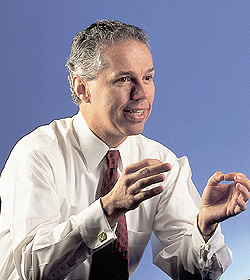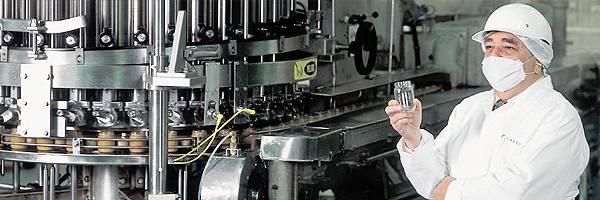|
In 2000 EBITDA amounted
to US$169 million, a 15% drop in constant pesos, and an 8% decrease in
dollars. The unitís cost and expense reduction initiatives were countered
by large price increases for natural gas and packaging materials. Despite
these price increases, the unit delivered recurring cost savings in excess
of US$20 million for the year and is exploring further opportunities to
reduce cost.
Exports grew 8% to US$203 million versus 1999. Niche food and beverage,
as well as cosmetics sales, largely fueled export growth.
Review
In
2000 the Glass Containers unit successfully completed its planned reorganization
into four segments: food and beverage (including soft drinks, juice and
beer), wine and liquor, cosmetics and pharmaceutical, and exports. This
more focused structure will enable the unit to better understand and meet
customer needs; it will also allow the unit to better support the businesses
that offer long-term strategic value, diversify business risk and maximize
profitability.
As they have done around the world, substitute materials have taken market
share away from commodity glass containers. Accordingly, Glass Containers
has redirected its strategy to concentrate on value-added domestic and
international niche product markets. The unit will capitalize on: the
knowledge and technology it acquired and developed through years of serving
the Mexican market, which demands lower volume runs and higher flexibility,
and new decorating technologies that are already in place.
The
unit is focusing its efforts on better understanding, anticipating and
serving customersí changing needs by leveraging its ability to innovate
and develop new value-added niche products, enhancing
its information technology
and improving overall supply chain management. Glass Containers is able
to produce distinctive lightweight bottles, niche bottles and containers
with customized images, special colors, sophisticated decorations and
designs, as well as plastishield, and adhered ceramic and heat transfer
labels. The unit has dramatically reduced its product development cycle
from 12 to five weeks to ensure rapid and accurate new product development.
Central Americaís economic
slowdown negatively affected its regional joint ventureís results (Comegua).
Although cost reductions did not fully compensate for the loss, the unit
will take advantage of the ventureís improved productivity during this
marketís anticipated recovery.
|
 |
 |
Business
Outlook
Food & Beverage
For the year, food,
cosmetics and pharmaceutical product sales will compensate for expected
declines in beer and soft drink volumes. Looking forward, the unit plans
to leverage its growing export position, technological agility, and innovative
product mix to tap demand in United States, Central and South American,
and European markets.
Wine & Liquor
Wine is a growing market in
both North and South America. In 2000 U.S. exports represented US$39 million
of this businessí sales. By capitalizing on its distinct design and technological
capability, the unit expects to build on its presence in profitable niche
wine and liquor markets.
Cosmetics
& Pharmaceutical
Cosmetics
are a particularly promising business segment because customers use distinctive
glass designs to create a compelling brand that resonates with consumers.
The value-added content and labor required to manufacture this type of
containers puts this business in an excellent worldwide competitive position.
The unitís glass containers also comply with the stringent requirements
of the pharmaceutical market, and the unit will continue to service this
market with quality highly hygienic products as Mexicoís pharmaceutical
industry continues to grow.
Exports
Exports have
become a very important part of the unitís total sales. Exports are primarily
concentrated in the Americas. The unitís special capabilities enable it
to penetrate and carve out interesting niche market positions that, because
of their size, are not as attractive to commodity glass manufacturers.
|


